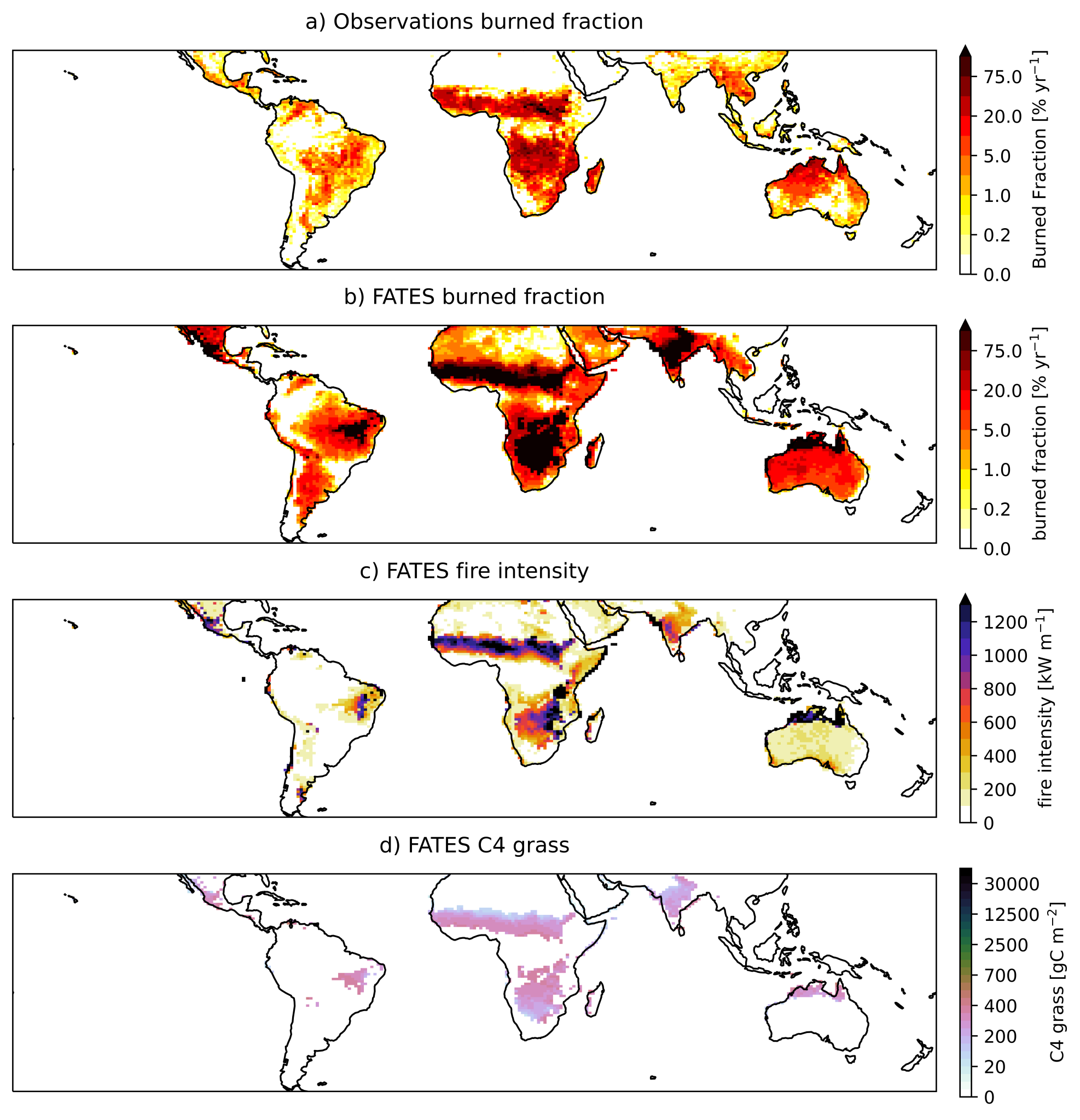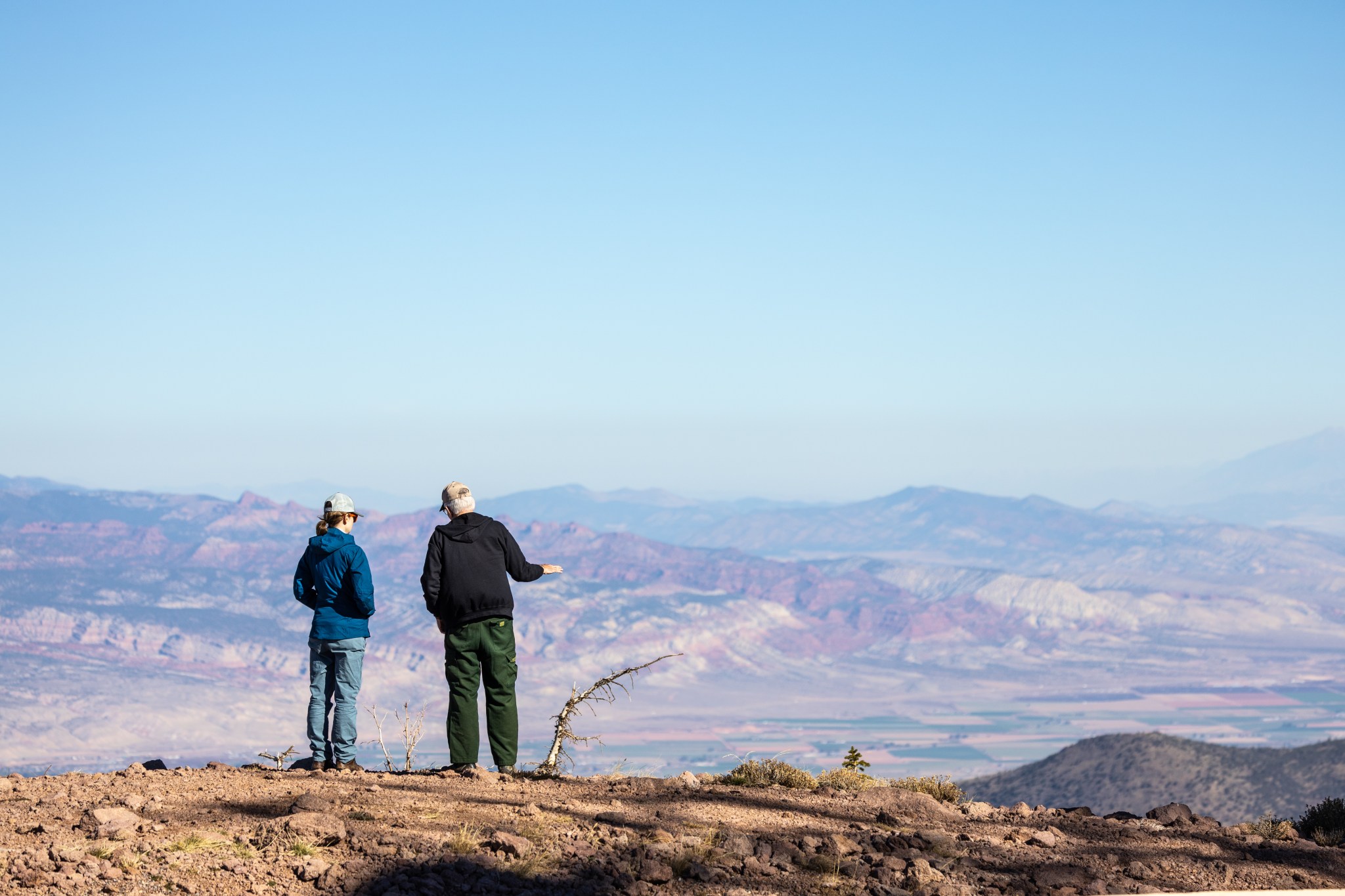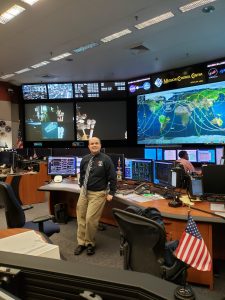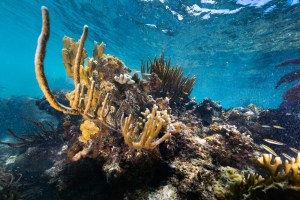4 min read

Jacquelyn Shuman, FireSense Project Scientist at NASA Ames Research Center, originally wanted to be a veterinarian. By the time she got to college, Shuman had switched interests to biology, which became a job teaching middle and high school science. Teaching pivoted to finance for a year, before Shuman returned to the science world to pursue a PhD.
It was in a forest ecology class taught by her future PhD advisor, Herman "Hank" Shugart, that she first discovered a passion for ecosystems and dynamic vegetation that led her into the world of fire science, and eventually to NASA Ames.
While Shuman's path into the world of fire science was not a direct one, she views her diverse experiences as the key to finding a fulfilling career. "Do a lot of different things and try a lot of different things, and if one thing isn't connecting with you, then do something different," Shuman said.
Diving into the World of Fire
Shuman's PhD program focused on boreal forest dynamics across Russia, examining how the forest changes in response to climate change and wildfire. During her research, she worked mainly with scientists from Russia, Canada, and the US through the Northern Eurasia Earth Science Partnership Initiative (NEESPI), where Shugart served as the NEESPI Chief Scientist. "The experience of having a highly supportive mentor, being a part of the NEESPI community, and working alongside other inspiring female scientists from across the globe helped me to stay motivated within my own research," Shuman said.
After completing her PhD, Shuman wanted to become involved in collaborative science with a global impact, which led her to the National Center for Atmospheric Research (NCAR). There, she spent seven years working as a project scientist on the Next Generation Ecosystem Experiment NGEE-Tropics) on a dynamic vegetation model project called FATES (Functionally Assembled Terrestrial Ecosystem Simulator). As part of the FATES team, Shuman used computer modeling to test vegetation structure and function in tropical and boreal forests after wildfires, and was the lead developer for updating the fire portion of the model.

Fire has also played a powerful role in Shuman's personal life. In 2021, the Marshall Fire destroyed neighborhoods near her hometown of Boulder, Colorado, causing over $513 million of damage and securing its place as the state's most destructive wildfire. Despite this, Shuman is determined to not live in fear. "Fire is part of our lives, it's a part of the Earth system, and it's something we can plan for. We can live more sustainably with fires." The way to live safely in a fire-inclusive ecosystem, according to Shuman, is to develop ways to accurately track and forecast wildfires and smoke, and to respond to them efficiently: efforts the fire community is continuously working on improving.
The Fire Science Community
Collaboration is a critical element of wildland fire management. Fire science is a field that involves practitioners such as firefighters and land managers, but also researchers such as modelers and forecasters; the most effective efforts, according to Shuman, come when this community works together. "People in fire science might be out in the field and carrying a drip torch and marching along in the hilltops and the grasslands or be behind a computer and analyzing remote sensing data," Shuman said. "We need both pieces."
Protecting communities from wildfire impacts is one of the most fulfilling aspects of Shuman's career, and a goal that unites this community. "Fire research poses tough questions, but the people who are thinking about this are the people who are acting on it," Shuman said. "They are saying, 'What can we do? How can we think about this? What information do we need? What are the questions?' It's a special community to be a part of."
Looking to the Future of Fire
Currently at NASA Ames Research Center, Shuman is the Project Scientist for FireSense: a project focused on delivering NASA science and technology to practitioners and operational agencies. Shuman acts as the lead for the project office, identifying and implementing tools and strategies. Shuman still does ecosystem modeling work, including implementing vegetation models that forecast the impact of fire, but also spends time traveling to active fires across the country so she can help partners implement NASA tools and strategies in real time.

"Right now, many different communities are all recognizing that we can partner to identify the best path forward," Shuman said. "We have an opportunity to use everyone's strengths and unique perspectives. It can be a devastating thing for a community and an ecosystem when a fire happens. Everyone is interested in using all this collective knowledge to do more, together."
Written by Molly Medin, NASA Ames Research Center









